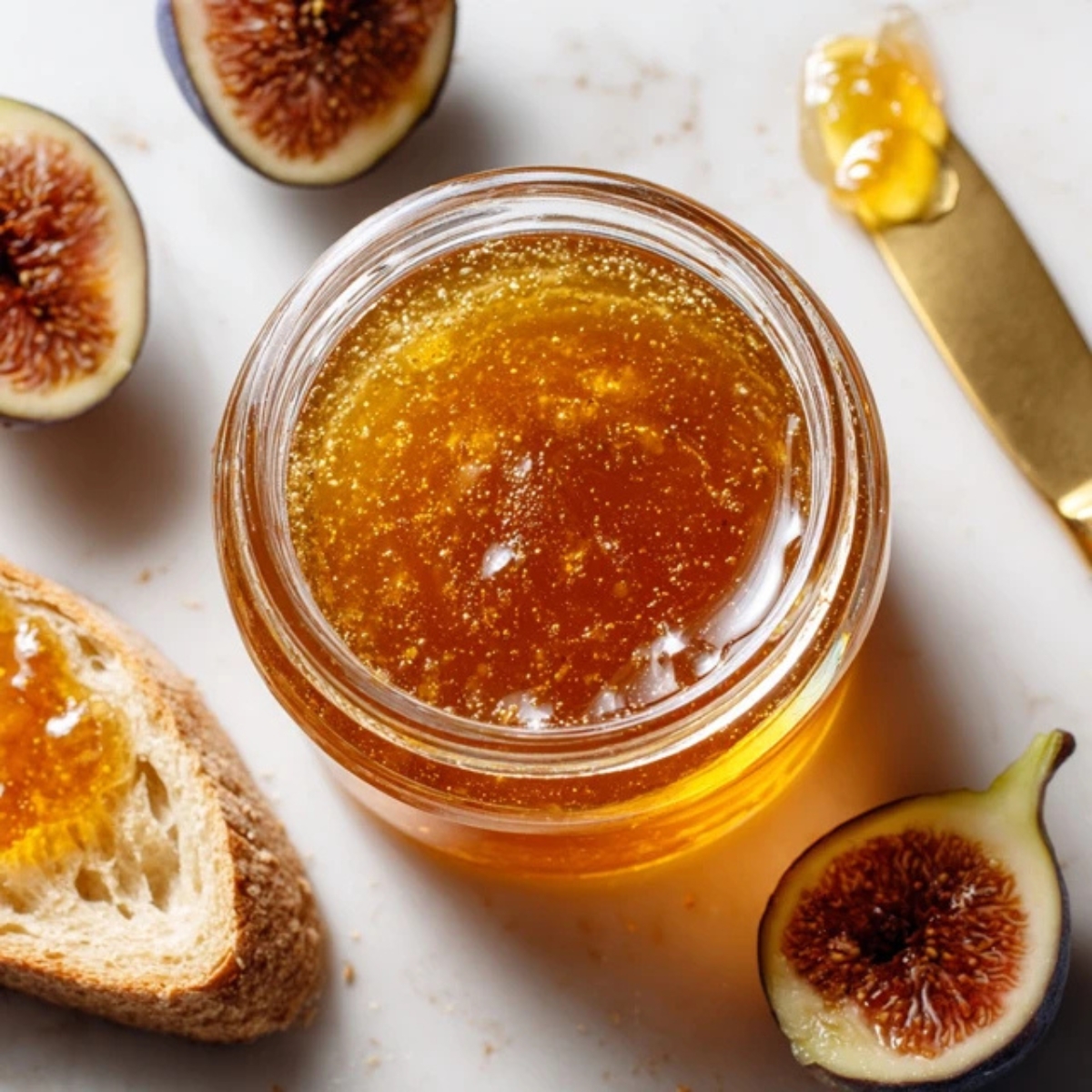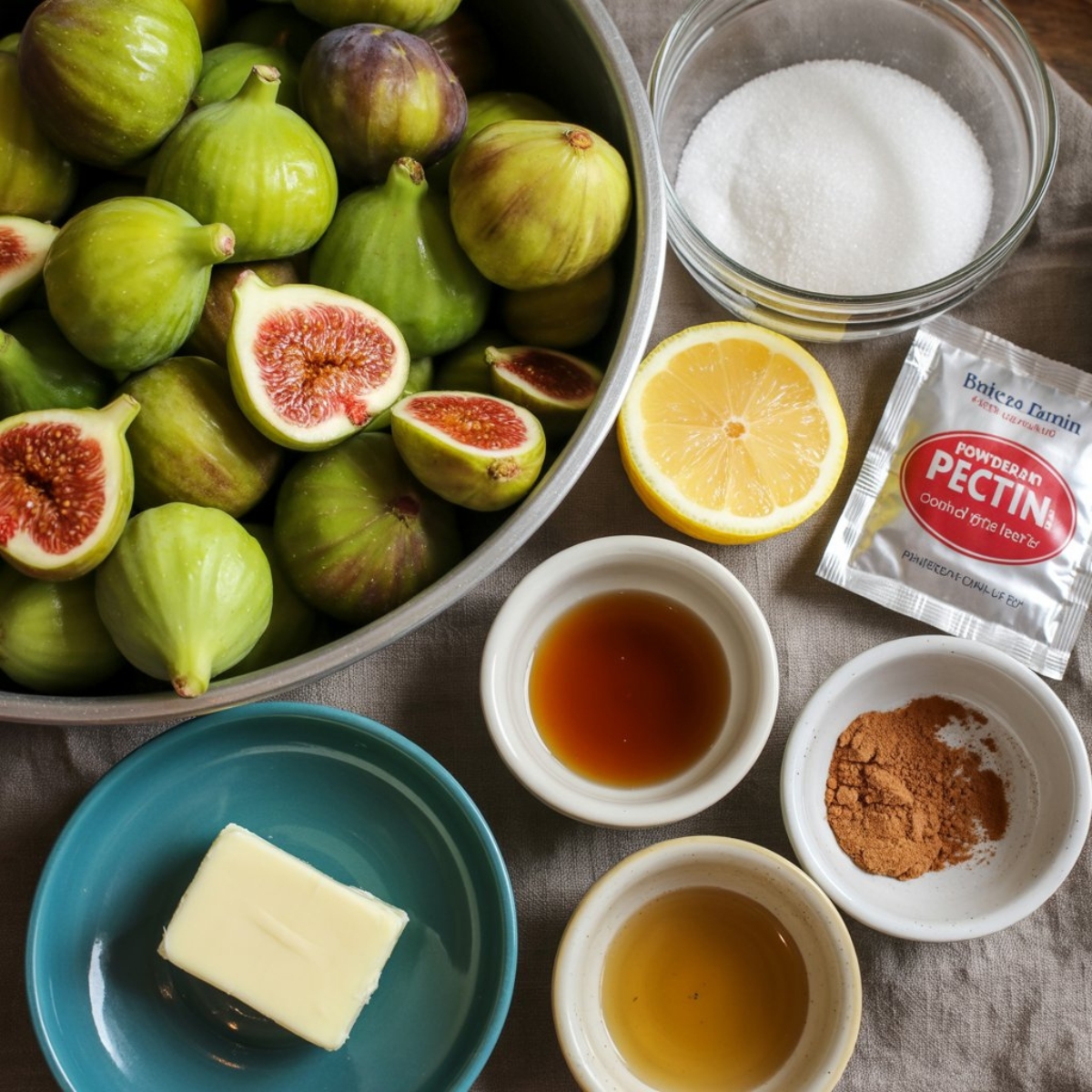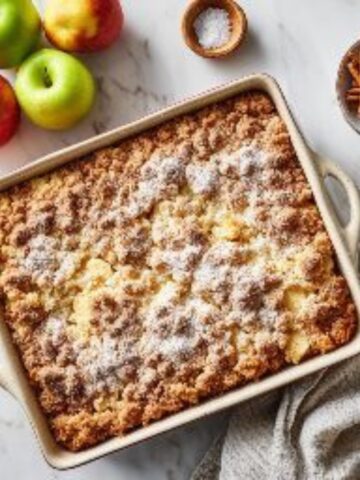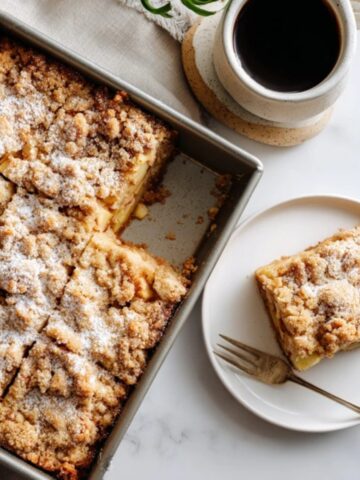There's nothing quite like the sweet, honey-like taste of homemade fig jelly spread on warm toast or paired with cheese. This fig jelly recipe transforms fresh, ripe figs into a smooth, elegant preserve that captures the essence of late summer. Making fig jelly at home is surprisingly simple, and the results are far superior to store-bought versions.As someone who's been making preserves for over a decade, I can tell you that this fig jelly recipe is foolproof and perfect for beginners.
The natural sweetness of figs means you need less added sugar, and the silky texture makes it ideal for everything from breakfast spreads to gourmet appetizers. Let me walk you through creating this delicious fig jelly that will become a staple in your pantry.

Background & Why This Fig Jelly Recipe Stands Out
Figs have been treasured for thousands of years, and for good reason. This particular fig jelly recipe celebrates the fruit's natural complexity while creating a preserve that's both versatile and long-lasting. Unlike many commercial jellies that rely heavily on artificial flavors, this homemade version lets the figs shine through with their subtle floral notes and rich sweetness.
What makes this fig jelly recipe special is its perfect balance of sweetness and texture. The straining process removes all the seeds and skin, creating a crystal-clear jelly that's smooth on the tongue. Whether you're new to canning or an experienced preserve maker, this fig jelly delivers consistent results every time. The addition of lemon juice not only helps with pectin activation but also brightens the overall flavor profile, making each spoonful a delightful experience.
Jump to:
Ingredients
For the Fig Jelly Base
- Figs (stems removed)
- Fresh lemon juice
- Powdered pectin
- Granulated sugar
- Butter (optional, reduces foaming)
Optional Flavor Enhancers
- Honey
- Vanilla extract
- Ground cinnamon

See recipe card for quantities.
Instructions
Step 1: Prepare the Fig Juice
- Wash and remove stems from fresh figs, then cut into quarters
- Place figs in a large, heavy-bottomed pot with ½ cup water
- Bring to a boil over medium-high heat, then reduce heat and simmer for 15 minutes
- Mash figs with a potato masher until completely broken down
- Line a fine-mesh strainer with cheesecloth and strain the mixture
- Press the pulp gently to extract juice; you should have about 3 cups of clear fig juice
Step 2: Combine Ingredients and Cook
- Return the strained fig juice to the clean pot
- Add lemon juice and stir in the powdered pectin until dissolved
- Add butter if using (this helps reduce foam during cooking)
- Bring mixture to a full rolling boil over high heat, stirring constantly
- Add all the sugar at once and return to a full rolling boil
- Boil for exactly 1 minute, stirring constantly
Step 3: Test and Finish the Jelly
- Remove from heat and quickly test for doneness using the spoon test
- Skim off any foam with a metal spoon
- If adding vanilla or other extracts, stir them in now
- Ladle hot jelly immediately into sterilized jars, leaving ¼ inch headspace
Expert Cooking Tips
Temperature Control is Key Getting the perfect set for your fig jelly requires precise temperature control. Use a candy thermometer and cook the mixture to exactly 220°F (104°C) at sea level. If you live at higher altitudes, subtract 2°F for every 1,000 feet above sea level.
The Plate Test Method Before you start cooking, place a small plate in the freezer. To test if your fig jelly is ready, drop a small amount onto the cold plate. If it wrinkles when you push it with your finger and holds its shape, it's done.
Foam Reduction Techniques
- Add ¼ teaspoon of butter at the beginning to minimize foam formation
- Skim foam continuously during cooking for the clearest final product
- Never stir the jelly in a circular motion; use a figure-8 pattern instead
Jar Preparation Tips Always sterilize your jars by boiling them for 10 minutes or running them through a dishwasher cycle. Keep jars hot until ready to fill to prevent thermal shock that could crack the glass.
Recipe Variations & Substitutions
Spiced Fig Jelly Transform your basic recipe by adding warm spices during the cooking process. Add 1 cinnamon stick, 3 whole cloves, and ¼ teaspoon ground cardamom to the fig juice before cooking. Strain out the whole spices before jarring.
Fig and Wine Jelly Replace ½ cup of the fig juice with a good quality red wine like Merlot or Cabernet Sauvignon. This creates a sophisticated flavor perfect for cheese boards and holiday entertaining.
Low-Sugar Options
- Use low-sugar pectin and reduce sugar to 3 cups
- Substitute 2 cups sugar with 1 cup honey for a more complex flavor
- Try using stevia or monk fruit sweetener, following package directions for conversions
Texture Variations For a slightly chunky texture, reserve ½ cup of the mashed figs and stir them back into the finished jelly. Some people prefer this rustic style that shows the fruit's natural character.
Equipment Recommendations
Essential Canning Equipment A large, heavy-bottomed stainless steel pot is crucial for even heat distribution when making fig jelly. Non-reactive materials prevent metallic flavors from affecting your preserve's taste.
Straining Tools
- Fine-mesh strainer lined with cheesecloth or jelly bag
- Large mixing bowls for catching the strained juice
- Wooden spoon for pressing pulp (avoid metal which can impart flavors)
Additional Helpful Tools
- Candy thermometer for precise temperature monitoring
- Canning funnel to prevent spills and ensure clean jar rims
- Jar lifter tongs for safe handling of hot jars
- Timer to track cooking times accurately
Storage & Meal Prep Tips
Proper Canning Storage Process filled jars in a boiling water bath for 10 minutes to create a proper seal. Properly canned fig jelly will keep for up to 2 years in a cool, dark pantry. Always check for proper sealing by pressing the center of the lid; it shouldn't move.
Refrigerator Storage Options If you're not canning, fresh fig jelly will keep in the refrigerator for up to 3 weeks. Use clean utensils each time you serve to prevent contamination and extend shelf life.
Freezer Storage Method Fig jelly can be frozen for up to 1 year in freezer-safe containers, leaving ½ inch headspace for expansion. Thaw overnight in the refrigerator before using.
Gift-Giving Tips
- Allow jars to cool completely before adding decorative labels
- Store gifted jars in a cool place until ready to give
- Include storage instructions and use-by dates on gift labels
Grandma's Secret That Changed Everything
The secret to achieving the perfect consistency in fig jelly lies in understanding the natural pectin content of your fruit. Slightly underripe figs actually contain more pectin than fully ripe ones, so using a mix of ripeness levels creates the ideal gel structure. My grandmother taught me to include about ¼ underripe figs in every batch for guaranteed setting success.
Another game-changing tip involves the timing of sugar addition. Never add sugar until the fig juice is at a full rolling boil with the pectin. This ensures proper chemical bonding and prevents crystallization. The one-minute timing after sugar addition is crucial; even 30 seconds longer can result in an overly thick fig jelly that loses its delicate spreadable texture.
FAQ
Do you remove skin from figs for jam?
For fig jelly, the skins are automatically removed during the straining process, which is what gives the final product its smooth, clear texture. The initial cooking breaks down the skins completely, and the cheesecloth filtering removes all solid particles.
Why does my tongue hurt after eating figs?
Fresh figs contain ficin, a proteolytic enzyme that can cause a tingling or burning sensation on the tongue and lips. This reaction is more common with fresh figs than with cooked fig jelly, as heat breaks down these enzymes during the cooking process.
What is fig jam?
Fig jam differs from fig jelly in that it contains pieces of the fruit and has a chunkier texture. While fig jelly is strained to create a smooth, clear consistency, jam retains the fruit solids for a more rustic appearance and varied texture.
Does fig jam taste good?
Fig jelly has a wonderfully sweet, honey-like flavor with subtle floral notes and a hint of berry-like complexity. The taste is rich but not overpowering, making it perfect for both sweet and savory applications from breakfast spreads to cheese pairings.
Sweet Endings and More Fig Adventures
This fig jelly recipe creates something truly special that transforms ordinary moments into memorable ones. Whether you're spreading it on morning toast, pairing it with artisanal cheeses, or giving jars as thoughtful gifts, homemade fig jelly brings a touch of elegance to any occasion. The process itself is meditative and rewarding, connecting you to generations of home preservers who understood the value of capturing seasonal abundance.
The beauty of mastering this fig jelly technique is that it opens doors to countless variations and creative applications. Once you've perfected the basic recipe, you'll find yourself experimenting with different flavor combinations and discovering new ways to incorporate this versatile preserve into your cooking repertoire. Don't forget to try our Chili Fig Jam for a spicy twist on this classic, or indulge in our decadent Fig Truffles that showcase figs in an entirely different way.
With love from my kitchen to yours,
Aubrey James
Related
Looking for other recipes like this? Try these:
Pairing
These are my favorite dishes to serve with this fig jelly recipe:

Homemade Fig Jelly Recipe
Equipment
- Large heavy-bottomed pot
- Fine mesh strainer with cheesecloth or jelly bag
- Potato masher
- Candy Thermometer
- Sterilized jars with lids
- Canning funnel
- Jar lifter tongs
Ingredients
- 4 pounds fresh ripe figs stems removed
- ½ cup water
- ¼ cup fresh lemon juice
- 1 package (1.75 oz) powdered pectin
- 6 cups granulated sugar
- ¼ teaspoon butter optional, reduces foaming
Optional Flavor Enhancers
- 1 teaspoon vanilla extract
- ½ teaspoon ground cinnamon
- 1 tablespoon honey
Instructions
- Cook figs with water, mash, and strain through cheesecloth.
- Add fig juice, lemon juice, and pectin to pot, then bring to a boil.
- Stir in sugar and return to full rolling boil for 1 minute.
- Use plate or spoon test to check set.
- Ladle hot jelly into sterilized jars, leaving ¼ inch headspace.
- Process jars in boiling water bath for 10 minutes.













Leave a Reply